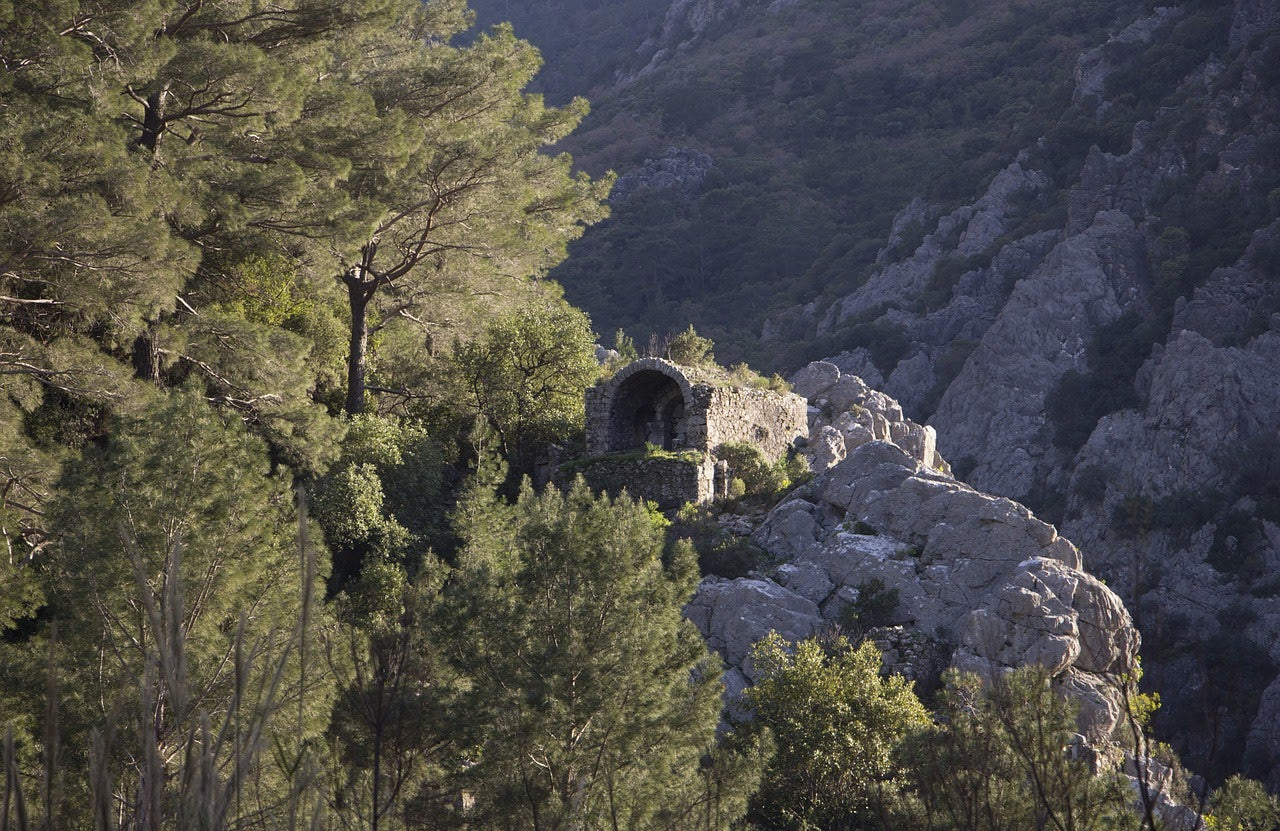Mediterranean’s Epic Coastal Trails

The way to explore the impressive Mediterranean shores is not always by car or plane. In fact, there is a different charm of exploring places on foot and far from the madding crowds. We have selected the most breathtaking walking routes of the Mediterranean for you.
What does it mean to explore the Mediterranean on foot? A perfect travel experience with magnificent natural landscapes, ancient civilisation ruins, turquoise waters to cool off, unpretentious restaurants, cafes and more where you can stop comfortably for a break and try local flavours… From western Mediterranean to eastern Mediterranean, here are our top 5 walking trails.
- THE FISHERMAN’S TRAIL, ROTA VICENTINA, PORTUGAL

Along the west coast of Portugal, you can set off to discover the hiking route of Rota Vicentina, which opened in 2012. Within the route exists several trails that accompany you with breath-taking cliffs and wild flowers. The Fishermen’s Trail hugs the coast for 125 kilometers, starting from the fishermen’s village of Porto Covo in the Alentejo region and ending in Cape of São Vicente in Algarve. As you walk on paths that give access to beaches and fishing grounds, you will be enjoying serenity, sun rays and the sound of waves. The road that starts from one of the most beautiful villages, Zambujeira do Mar, first leads to the beach and then to cliffs. A little bit further is the golden sands of Carvalhal, Machados and Amália. At Ponta em Branco, perhaps the most impressive spot of the trail is awaiting you: Odeceixe Beach that is located between a river and the Atlantic Ocean. Do not forget to stroll up to the tascas (Portuguese for restaurant/tavern) “O Sacas”, located nearby a small fishing harbour north of Zambujeira do Mar. This is a regional restaurant with 25 years of experience, where fish constitutes the main staple of its menu.
- CINQUE TERRE, FROM VERNAZZA TO MONTEROSSO, ITALY

Cinque Terre is one of the most dramatic and beautiful parts of the European coastline. It is not just called that because of its numerous vineyards, vegetable gardens and zigzagging paths. As the name suggests, Cinque Terre, a UNESCO World Heritage Site, consists of five different villages, each with steep terraces and colorful houses cascading into the sea like freshly spilled paint. These villages are connected to each other by train or pathways. Absolutely no cars, so a tranquility you will not find in many places awaits! Vernazza is perhaps the most beautiful village. You can go to neighbouring Monterosso, either by the coastal road that runs through woods and conservatories, or the road above, which offers the opportunity to see the Santuario di Nostra Signora di Reggio from various angles. Your reward on arrival is Ristorante Ciak, the fish restaurant in Monterosso’s historic center. Enjoy mixed dishes with fresh jumbo shrimp, anchovies, and squid.
- LYCIAN WAY, FROM HOYRAN TO SIMENA, TURKEY


No wonder the Lycian Way is considered one of the best long-distance walking routes in the world. This hiking trail stretches 540 kilometers between Fethiye and Antalya, along Turkey’s most beautiful coastline, the Turquoise Coast.
It offers a very special walking experience in combining both nature and history with the ruins of ancient civilizations surrounded by the blue and green of the Mediterranean. Lycian Way is listed as one of the world’s top ten walks. The route passes 27 historic sites, mainly dating from Roman Lycia that date back more than 2000 years.. Nearly all along the 29-day route, you can stay in pensions, small hotels, village houses or camping places. On this route, you will pass through Hoyran’s Kapaklı Village, where diligentTurkish women make gözleme (a Turkish pancake type) for hungry hikers. Then you will follow the stone-paved road that zigzags through the fertile lands of Western Anatolia with magnificent views of Kekova. Your last stop will be Kaleköy / Simena, where old stone houses rise between ancient tombs and turquoise sea views. Take a break at I am Here Cafe and taste homemade ice cream with lemon and mint or carob and fig.
- RUTO DE LOS VOLCANES, FROM REFUGIO EL PILAR TO FUENCALIENTE, CANARY ISLANDS, SPAIN


La Palma, the most arduous of the Canary Islands for hiking, has deep bays from Gran Canaria, more endemic Canario life than Tenerife, and younger volcanoes than Lanzarote. In the shape of a tooth, La Palma has a huge cavity above the crater of Caldera de Taburiente; its center is surrounded by banana groves and its southernmost tip is covered with a sea of lava erupted from Teneguia. The entire island is covered with well-marked hiking routes, but this route follows the heavenly, fragrant pine forests and vineyards, through the most recent (formed in 1971) volcanic wasteland. Last step of the route descends towards the saltworks in Fuencaliente, where the red and white striped lighthouse resembles a candy cane. Here, try octopus, smoked cheese, and the island’s specialty goat stew at El Jardin de la Sal restaurant.

- CAMI DE CAVALLS, FROM CALA MORELL TO CIUTADELLA, MENORCA, SPAIN

In the days of marauding danger, the only buildings on the shore of the Spanish island of Menorca were watchtowers with lanes for horsemen to go. And these are still the main components of Cami de Cavalls (Horseback Way), which stretches to the parts of Menorca, where few tourists go. Walkers on this road pass through palm-lined beaches, delicate vegetation, Moorish water wells and rare prehistoric village ruins. Nothing seems to have changed for thousands of years along the route. Treat yourself to tapas at Cala Morell’s Troglodita’s restaurant, try the local favorites, rinones al jerez (kidney with sherry).





